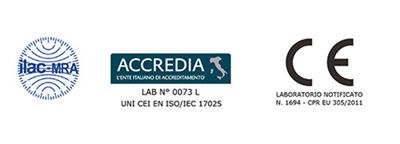 The accurate and periodic control of the chemical composition of raw materials used in a production process is of paramount importance in guaranteeing the stability of the quality of the finished product. With its state-of-the-art analytical equipment, Stazione Sperimentale del Vetro is capable of accurately and reliably determining both the concentration of the main components of the raw materials, and their content of trace contaminants.
The accurate and periodic control of the chemical composition of raw materials used in a production process is of paramount importance in guaranteeing the stability of the quality of the finished product. With its state-of-the-art analytical equipment, Stazione Sperimentale del Vetro is capable of accurately and reliably determining both the concentration of the main components of the raw materials, and their content of trace contaminants.
By means of this type of analysis it is possible to determine the abundance in the sample of the most common elements (e.g. Si, Al, Na, K, Mg, Ca, Fe, Ti, Pb, Zr, Cr, etc.), expressed as weight percentage of oxides; the limit of quantification of the instrument varies between 0.001% and 0.01%, depending on the specific element.
The analysis is carried out on glass discs called “beads”, which are prepared from the original sample by fine grinding, pre-calcination at a suitable temperature (to determine the loss on ignition, LOI, of the material) and subsequent melting with alkaline flux (lithium tetraborate). If the sample type requires it (e.g. raw materials containing reduced phases such as pure Si, C, SiC, etc), it is also possible to carry out the analysis without melting, using discs made of compressed powders (with wax as binder).
When the quantification of impurities or trace contaminants is required, the determination is carried out by “wet chemistry” techniques, using instruments such as GF-AAS, ICP-OES or ICP-MS, depending on the specific element to be analyzed and to the limit of detection or quantification to be achieved. Detection limits of the order of 0.1, or even 0.01 ppb for some elements, can be achieved for example using ICP-MS.
For some raw materials such as coal and graphite, and for secondary raw materials such as glass cullet, blast furnace slag, calumites, etc., in addition to the classic analysis of chemical composition and trace contaminants, it is of fundamental interest to know the total content of carbon and sulfur, which are determined using an infrared S/C analyzer with graphite furnace (ELTRA).

